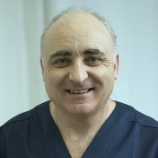Dental Implant Biomaterials: In Vitro and In Vivo Simulations and Applications
A special issue of Materials (ISSN 1996-1944). This special issue belongs to the section "Biomaterials".
Deadline for manuscript submissions: closed (20 April 2023) | Viewed by 41204
Special Issue Editors
Interests: dental implant; implantprostheses; prostheses; biological osseointegration process; implant and oral surgery
Interests: tissue regenerations; biocompatibility and bioactivity of materials for medical devices; molecular aspects of osseointegration of dental implants; chemical and physical stimulation of implant integration; nanoparticles for theranostics in cancer; oncology
Special Issues, Collections and Topics in MDPI journals
Special Issue Information
Dear Colleagues,
In all fields of regenerative medicine, and in particular in dental implantology, the success rate depends on several parameters, including the chemical, physical, mechanical and biological properties of the materials. For the optimization of these characteristics, both in vitro and in vivo simulations represent the gold-standard protocols to characterize the biocompatibility, biomechanics, and bioactivity of new biomaterials.
In vitro studies allow one to investigate biomechanical aspects, new superficial implant modifications, biocompatibility, and molecular mechanisms triggered by implant placement and which lead to the specific response of the tissue (bioactivity); in vivo simulations can also characterize molecular (such as growth factors and extracellular matrix proteins) and histological events occurring at the interface between tissues and material and the systemic effects evoked by the presence of the dental implant. The characterization of biomolecular pathways activated by different types of implants or exogenous modifications is fundamental to improving the design of biomaterials and the osseointegration process.
To this end, the Special Issue “Dental Implant Biomaterials: In Vitro and In Vivo Simulations and Applications” aims to collect the latest knowledge on dental implant biomaterials obtained through in vitro and in vivo studies.
In the light of the above observations, studies of biological and biomechanical responses to materials related to dental implants are welcome in this Special Issue.
Dr. Gianmario Schierano
Dr. Giuliana Muzio
Guest Editors
Manuscript Submission Information
Manuscripts should be submitted online at www.mdpi.com by registering and logging in to this website. Once you are registered, click here to go to the submission form. Manuscripts can be submitted until the deadline. All submissions that pass pre-check are peer-reviewed. Accepted papers will be published continuously in the journal (as soon as accepted) and will be listed together on the special issue website. Research articles, review articles as well as short communications are invited. For planned papers, a title and short abstract (about 100 words) can be sent to the Editorial Office for announcement on this website.
Submitted manuscripts should not have been published previously, nor be under consideration for publication elsewhere (except conference proceedings papers). All manuscripts are thoroughly refereed through a single-blind peer-review process. A guide for authors and other relevant information for submission of manuscripts is available on the Instructions for Authors page. Materials is an international peer-reviewed open access semimonthly journal published by MDPI.
Please visit the Instructions for Authors page before submitting a manuscript. The Article Processing Charge (APC) for publication in this open access journal is 2600 CHF (Swiss Francs). Submitted papers should be well formatted and use good English. Authors may use MDPI's English editing service prior to publication or during author revisions.
Keywords
- dental implant materials
- in vitro and in vivo models
- biological osseointegration process
- cellular interaction in bone remodeling
- histological and histomorphometrical aspects
- biomechanical aspects







